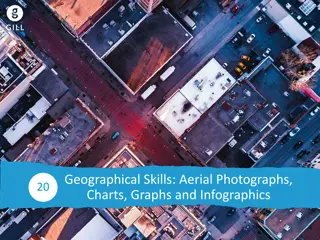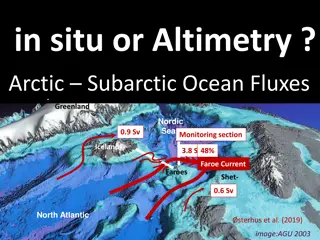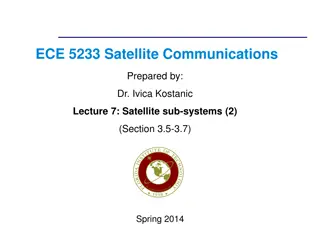Understanding Visual Interpretation of Air Photographs and Satellite Images
Visual interpretation of photographs and satellite images involves extracting qualitative and quantitative information from the terrain, identifying objects ranging from natural to artificial features based on their reflection of electromagnetic radiation, and analyzing elements like tone, pattern, shape, and shadow to interpret images accurately.
Download Presentation

Please find below an Image/Link to download the presentation.
The content on the website is provided AS IS for your information and personal use only. It may not be sold, licensed, or shared on other websites without obtaining consent from the author. Download presentation by click this link. If you encounter any issues during the download, it is possible that the publisher has removed the file from their server.
E N D
Presentation Transcript
ELEMENTS OF VISUAL INTERPRETATION AIR PHOTOGRAPHS AND SATELLITE IMAGERIES
Visual Image Interpretation of Photographs and Images Image interpretation of remote sensing data is to extract qualitative and quantitative information from the photograph or imagery. It involves identification of various objects on the terrain which may be natural or artificial consists of points, lines, or polygons. It depends on the way how different features reflect or emits the incident electromagnetic radiation and their recording by a camera or sensor. In the very beginning, when digital images and computerised classification were not available, the aerial photographs were analyzed only by visual interpretation. Accuracy of the interpretation depends on the training, experience, scale of photograph, geographic location of the study area, associated map, ground observation data etc. After the availability of satellite images, the data were categorized in two processing methods: analogue aerial photographs and digital satellite images. Though satellite images can be visually interpreted and aerial photographs can be processed by computers.
Tone or color: Tone is the relative brightness of grey level on black and white image or color/F.C.C image. Tone is the measure of the intensity of the reflected or emitted radiation of the objects of the terrain.
Pattern: Pattern refers to the spatial arrangement of the objects. Objects both natural and manmade have a pattern which aids in their recognition. The repetition of certain general form or relationship in tones and texture creates a pattern, which is characteristic of this element in image interpretation
Shape: Shape refers to the general form, configuration or outline of an individual object. Shape is one of the most important single factors for recognizing object from an image. Generally regular shapes, squares, rectangles, circles are signs of man-made objects, e.g., buildings, roads, and cultivated fields, whereas irregular shapes, with no distinct geometrical pattern are signs of a natural environment, e.g., a river, forest. In a general case of misinterpretation in between roads and train line: roads can have sharp turns, joints perpendicularly, but rails line does not. From the shape of the following image, it can be easily said that the dark-blue colored object is a river.
vi) Shadow: Shadow is a helpful element in image interpretation. It also creates difficulties for some objects in their identification in the image. Knowing the time of photography, we can estimate the solar elevation/illumination, which helps in height estimation of objects. The outline or shape of a shadow affords an impression of the profile view of objects. But objects within shadow become difficult to interpret
ii) Texture: Texture refers to the frequency of tonal variation in an image. Texture is produced by an aggregate unit of features which may be too small to be clearly discerned individually on the image.
Association: Association refers to the occurrence of certain features in relation to others objects in the imagery. In urban area a smooth vegetation pattern generally refers to a play ground or grass land not agricultural land (Fig 9.7).
Site: Site refers to topographic or geographic location. It is also an important element in image interpretation when objects are not clearly identified using the previous the elements. A very high reflectance feature in the Himalayan valley may be snow or cloud, but in Kerala one cannot say it as snow.























